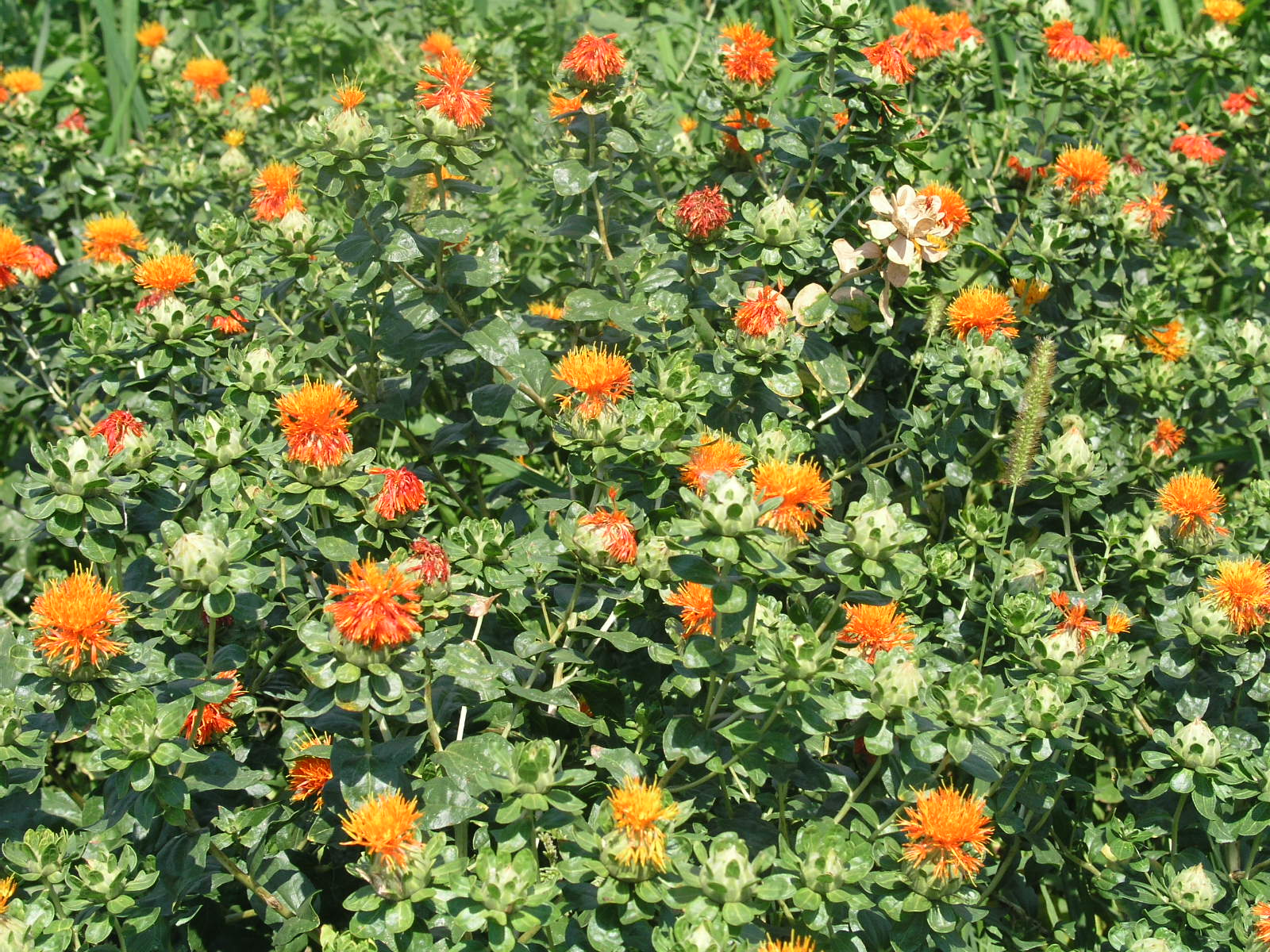SAFFLOWER
Carthamus tinctorius L.
ARA - red flowers
TEREZA - yellow flowers
Year if registration 2018

0rigin:
The plant is a member of the family Compositeae. It is native to steppe and semi-steppe regions. It resembles a thistle.
Description:
It grows to 50–110 cm in height, its growing season is 100–130 days, the time of blooming is 3–4 weeks. It is a short-day plant. 1000-seed weight of achenes ranges from 25 to 50 g. The pericarp constitutes 40–60% in different varieties. The oil content of achenes is 25–37%, oil content in seeds is 45–55%. Protein content is 30–35%. Oil is semi-drying, containing up to 80% of linoleic acid and only 0 – 2% of linolenic acid, approximately 13% of oleic acid, 4–6 % of palmitic acid, 1–4% of stearic acid, 0.4% of arachic acid, and 0.05% of lignoceric acid. Raw oil can be used for human consumption. It is comparable to sunflower oil but it has a higher proportion of linoleic acid.
Safflower is grown in dry and warm regions. It has no special requirements for soil, it is productive on dry and calcareous soils. 60 kg N, 66.4 kg K and 26.4 kg P are applied. The seedbed for safflower is prepared in the same manner as for spring cereals and sunflower: harrowing in spring 2–3 days before seeding, ploughing at the sowing depth. Safflower germinates at 5–6#C. It is seeded in rows of 25–40 cm at a depth of 3 cm so that each square meter may carry 20 to 25 seedlings. The sowing rate is 20–25 kg/ha in mid-March or in early April at the latest. After emergence soil loosening with weeding is accomplished. It is resistant to spring frosts. At the time when the first 2–4 true leaves are formed the stand is thinned to 15 – 25 cm. It matures from late August to early September. It suffers mostly from fungal diseases such as Fusarium, Alternaria. It is sensitive to rainfall with sultry sunshine because the torus usually heats. The seed is harvested with a combine harvester without desiccation at full maturity at humidity of 9%. It threshes and purifies well. The seed resembles that of the sunflower. It yields 1,5 to 2.5 t/ha.
At the time of blooming the petals are collected for natural dye. Safflower growing as a catch crop and a green-manure crop
The crop can also be utilized because of its resistance to drought as a high-quality catch crop in drier regions to produce hay and green manure. The roots of safflower penetrate up to the depth of 2.5 m. Sowing in spring or after harvesting main crops, no later than on 10 August. The sowing rate is 30kg/ha, row width is 12.5 cm. The stand is harvested at the vegetative stage, not to be prickly. It is often considerably injured by grazing (roe deer, hares). As it has a high proportion of sugars (150 mg/g) it is highly palatable for animals. But it is not suitable for drying, because after drying the leaves become very prickly. It can be stated that in many aspects this plant is as good as traditional crops used as catch crops and feed plants. It also contains a higher amount of sugars. The main advantage is drought resistance and when late seeded a very rapid growth in summer months after cereal harvest. The breeding material used is selected for thornlessness so that it might be used as a catch crop and feed.
Economical traits:
- annual fodder crops
- the best results are reached in warm regions
- yields of seeds 1,5–2,5 t/ha
- content of oil 25 %
- the plant is valued by beekeepers for high content of nectar in late summer

